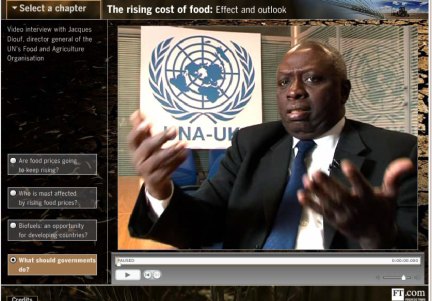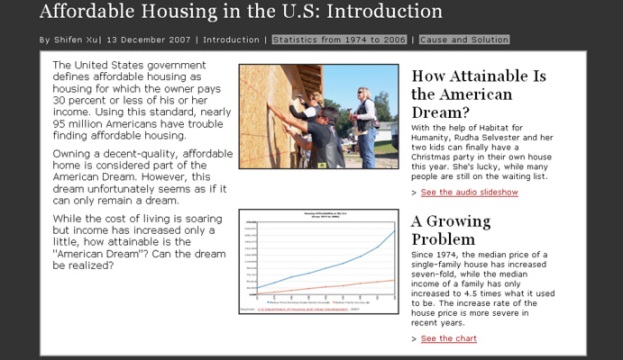How could I describe this semester? Last semester, I really enjoyed the Toolkit I course; on the other hand, this semester course, Toolkit II, was slightly more painful. There were simply too many notions to struggle with. Nonetheless, all this hard work made me aware of just how sharp my set of skills needs to be in order to stand out in the 21st century’s media environment.
From the very beginning of my studies at the University of Florida, my professors and friends have stressed to me the importance of new media and online reporting. They said I should focus on skills relevant to those new media, such as technology and creative thinking. With foreigners facing a language barrier to compete with native speakers in print and television reporting, this new wave of media provides foreign reporters a level playing field.
Recently, I have been exposed to new technologies and method that I had never experienced before. Shooting video footage, a task that demands extensive visual work and creative thinking, offers me a chance to develop my storytelling skills. It is always a thrill to find a lead,dig the story and present it creatively. In comparison to last summer’s soundslide, video storytelling has been a greater challenge for me, as it is difficult to effectively calibrate details such as view angles and lighting. I believe that a great video narrator must be a careful observer in daily life. I am glad to have spend time learning how to edit video footage, a task that, though it may seem boring, is actually very enjoyable. On only wish I could have more experience using Final Cut Pro.
Creating web animations with Adobe Flash was also a blast, and seeing my first Flash project successfully come together gave me great satisfaction. At the end of last semester, I wanted to develop my Photoshop skills; now, I really wanted to develop my Flash skills. Hopefully I won’t forget everything I learned…
This semester has been a definite step up from the Fall semester. It was more demanding, giving me the opportunity to challenge myself and strive to become the best news reporter that I can be.




Recent Comments